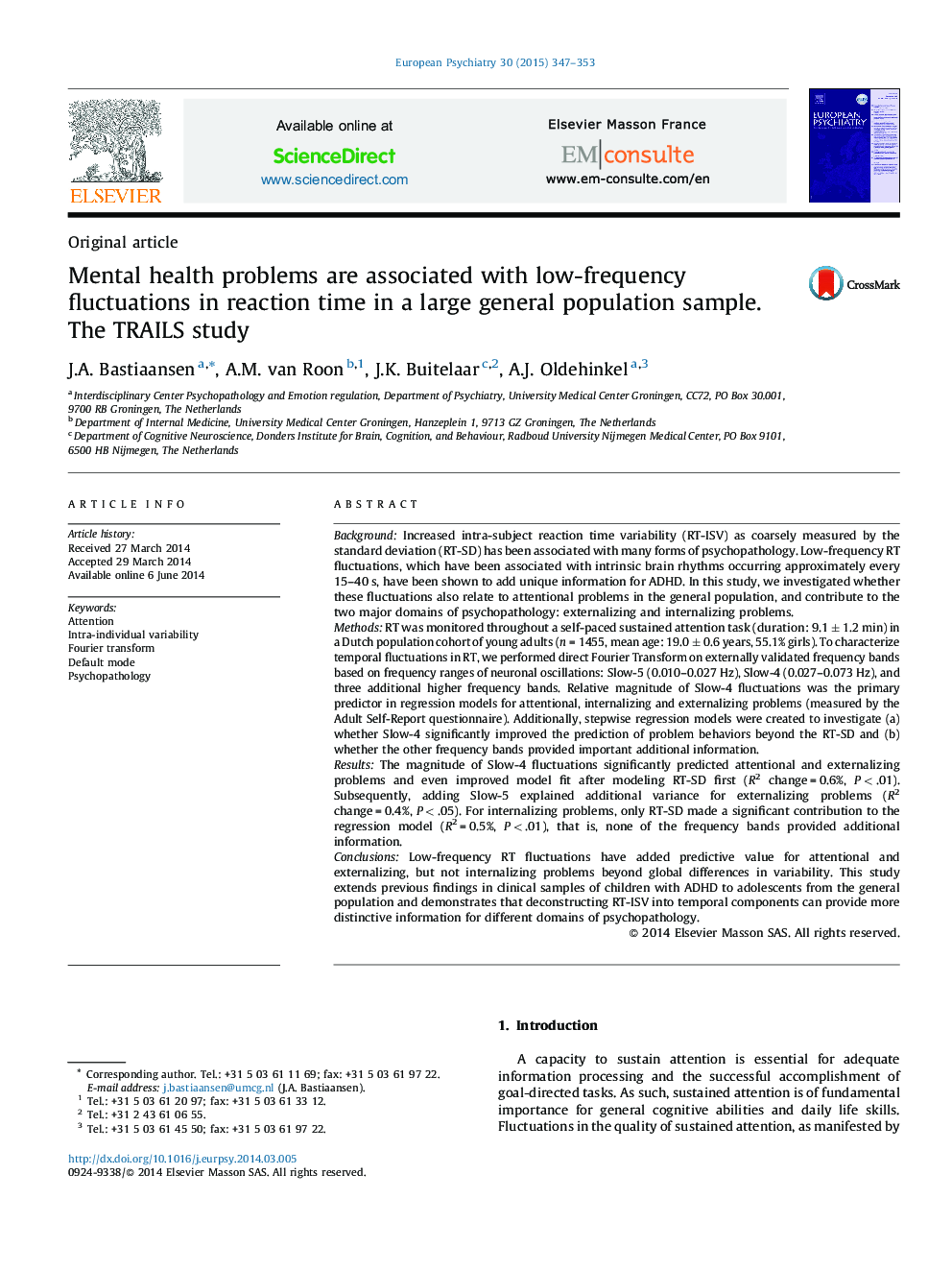| کد مقاله | کد نشریه | سال انتشار | مقاله انگلیسی | نسخه تمام متن |
|---|---|---|---|---|
| 6229319 | 1277290 | 2015 | 7 صفحه PDF | دانلود رایگان |

BackgroundIncreased intra-subject reaction time variability (RT-ISV) as coarsely measured by the standard deviation (RT-SD) has been associated with many forms of psychopathology. Low-frequency RT fluctuations, which have been associated with intrinsic brain rhythms occurring approximately every 15-40 s, have been shown to add unique information for ADHD. In this study, we investigated whether these fluctuations also relate to attentional problems in the general population, and contribute to the two major domains of psychopathology: externalizing and internalizing problems.MethodsRT was monitored throughout a self-paced sustained attention task (duration: 9.1 ± 1.2 min) in a Dutch population cohort of young adults (n = 1455, mean age: 19.0 ± 0.6 years, 55.1% girls). To characterize temporal fluctuations in RT, we performed direct Fourier Transform on externally validated frequency bands based on frequency ranges of neuronal oscillations: Slow-5 (0.010-0.027 Hz), Slow-4 (0.027-0.073 Hz), and three additional higher frequency bands. Relative magnitude of Slow-4 fluctuations was the primary predictor in regression models for attentional, internalizing and externalizing problems (measured by the Adult Self-Report questionnaire). Additionally, stepwise regression models were created to investigate (a) whether Slow-4 significantly improved the prediction of problem behaviors beyond the RT-SD and (b) whether the other frequency bands provided important additional information.ResultsThe magnitude of Slow-4 fluctuations significantly predicted attentional and externalizing problems and even improved model fit after modeling RT-SD first (R2 change = 0.6%, P < .01). Subsequently, adding Slow-5 explained additional variance for externalizing problems (R2 change = 0.4%, P < .05). For internalizing problems, only RT-SD made a significant contribution to the regression model (R2 = 0.5%, P < .01), that is, none of the frequency bands provided additional information.ConclusionsLow-frequency RT fluctuations have added predictive value for attentional and externalizing, but not internalizing problems beyond global differences in variability. This study extends previous findings in clinical samples of children with ADHD to adolescents from the general population and demonstrates that deconstructing RT-ISV into temporal components can provide more distinctive information for different domains of psychopathology.
Journal: European Psychiatry - Volume 30, Issue 2, February 2015, Pages 347-353